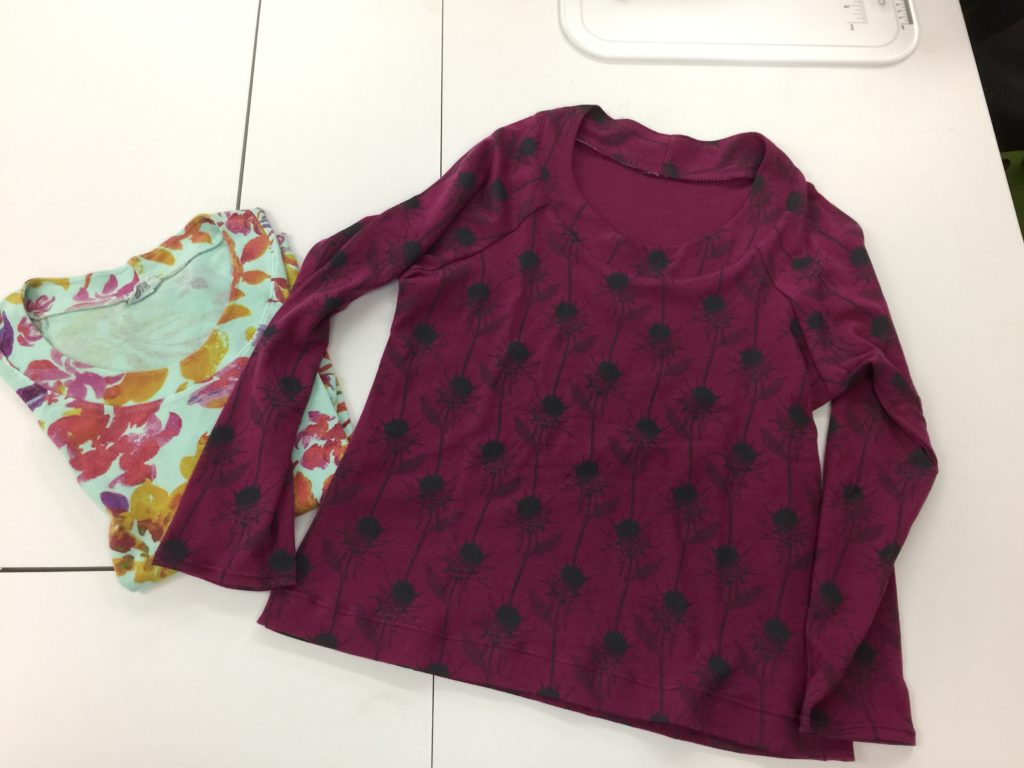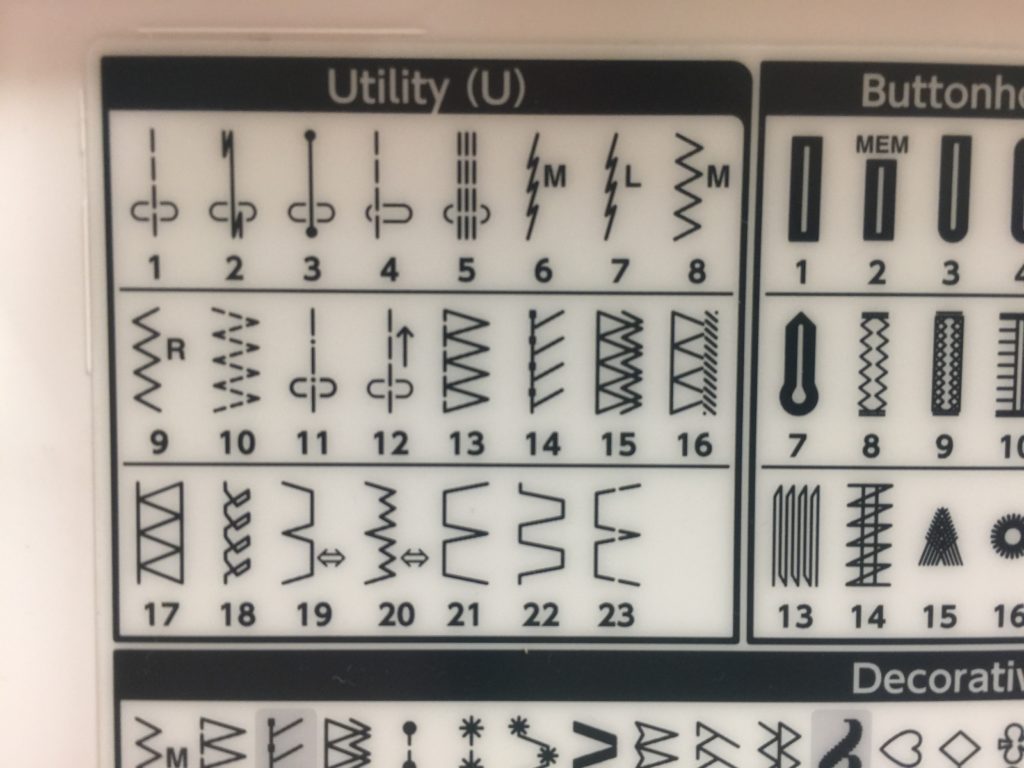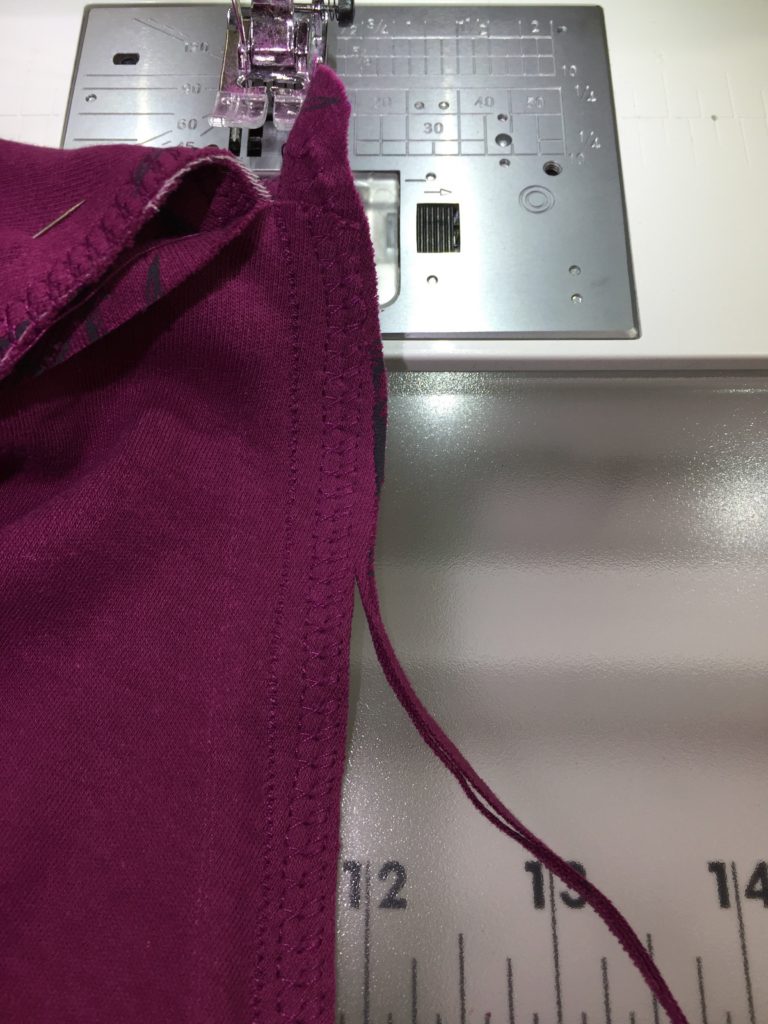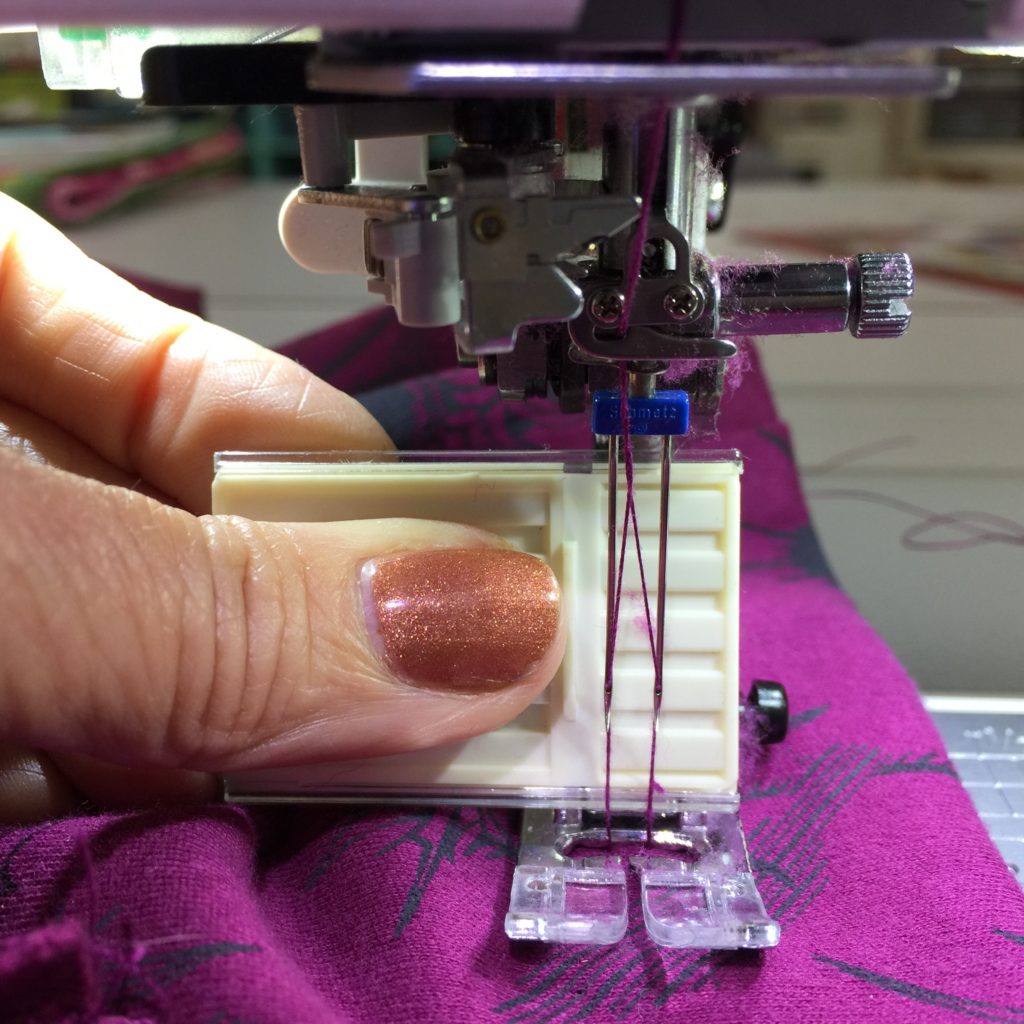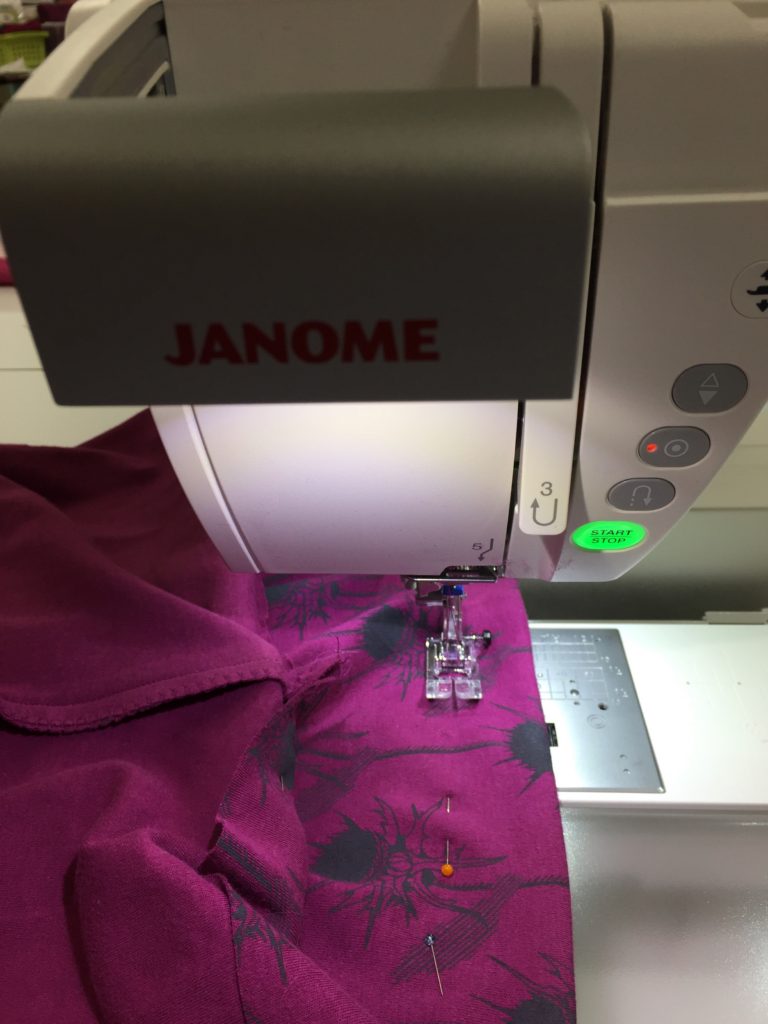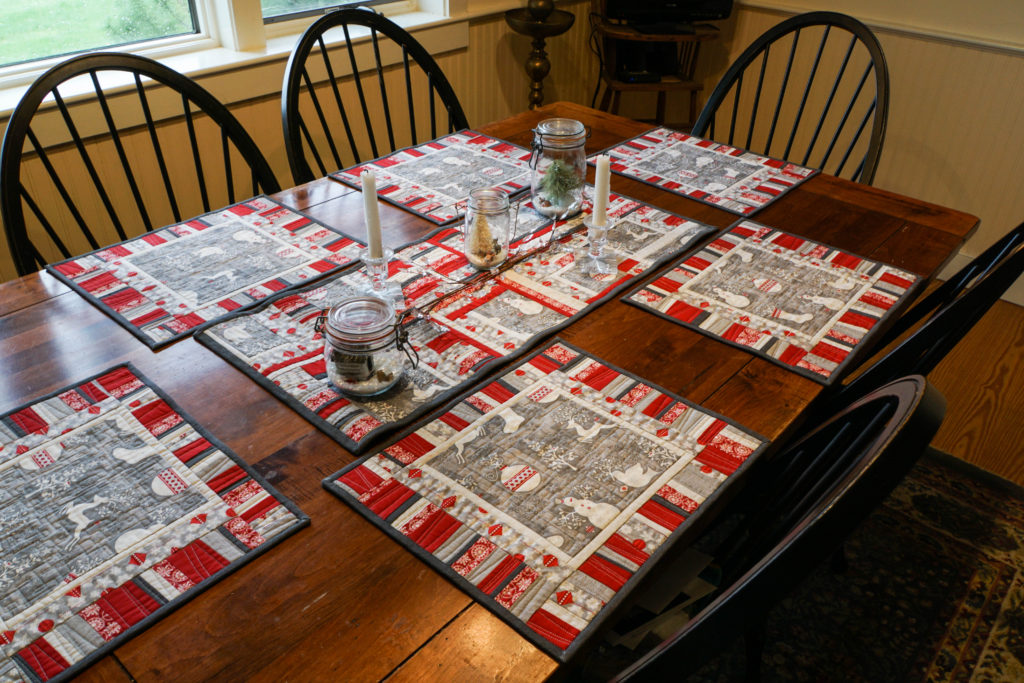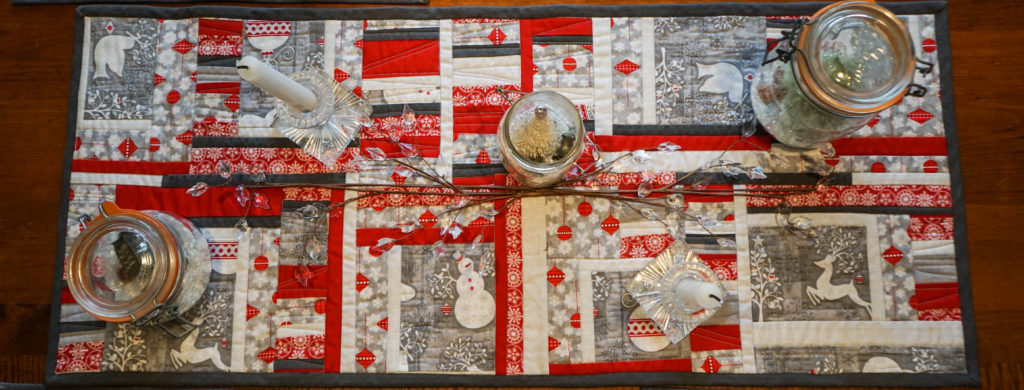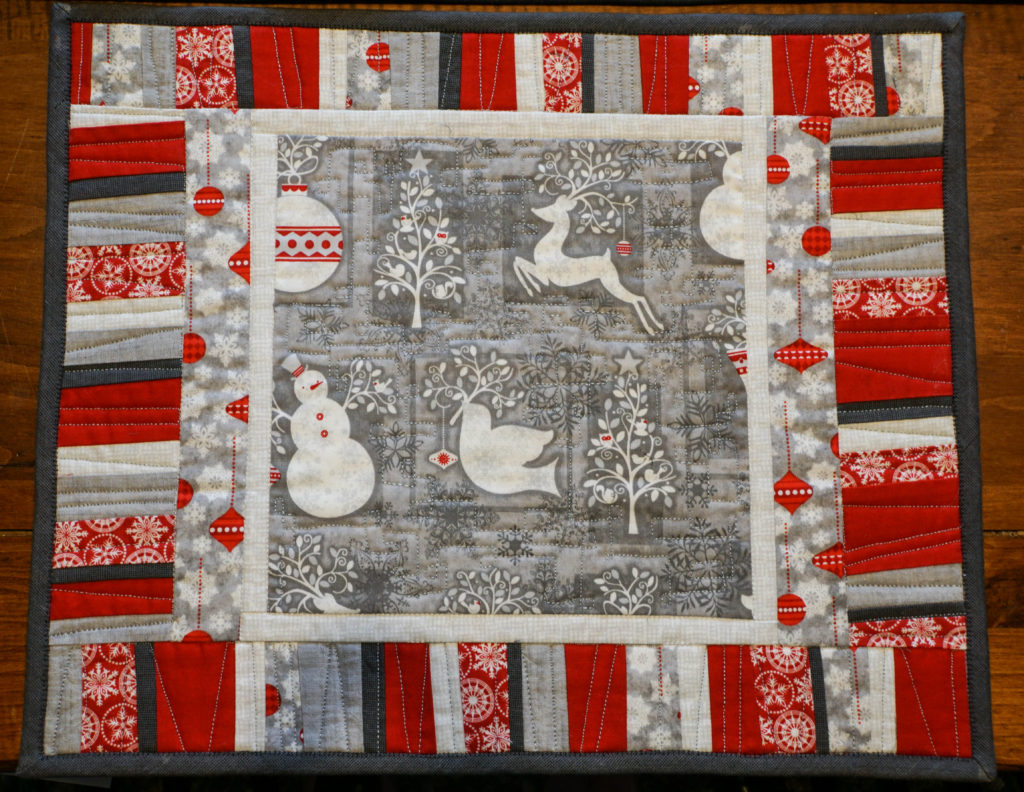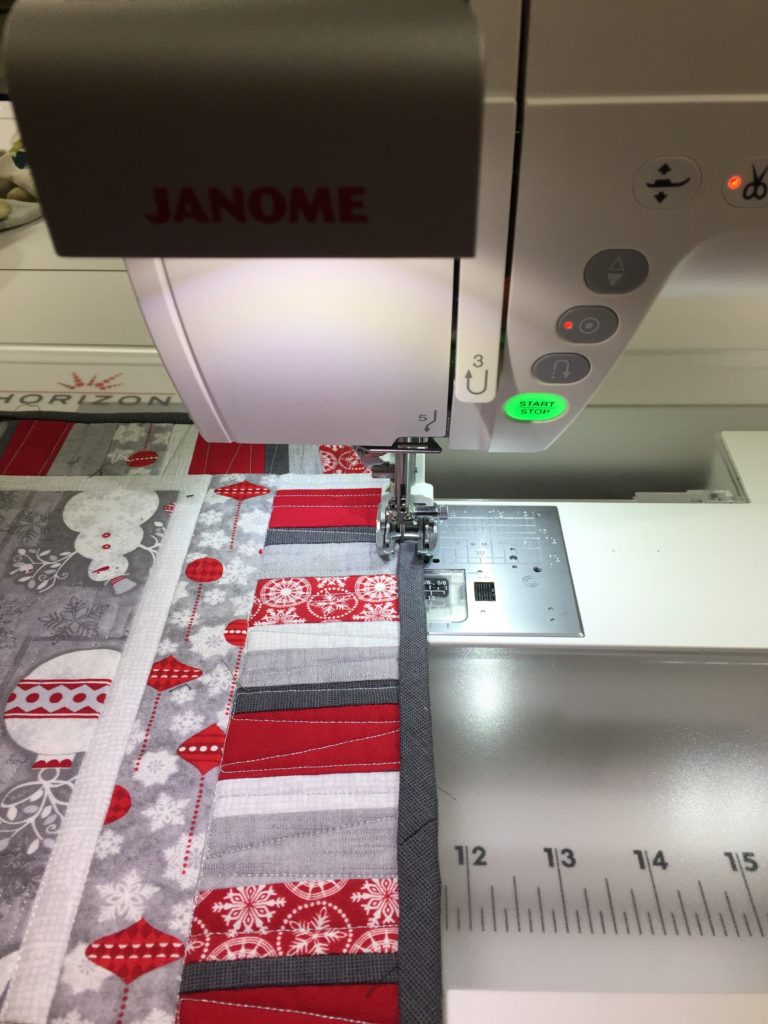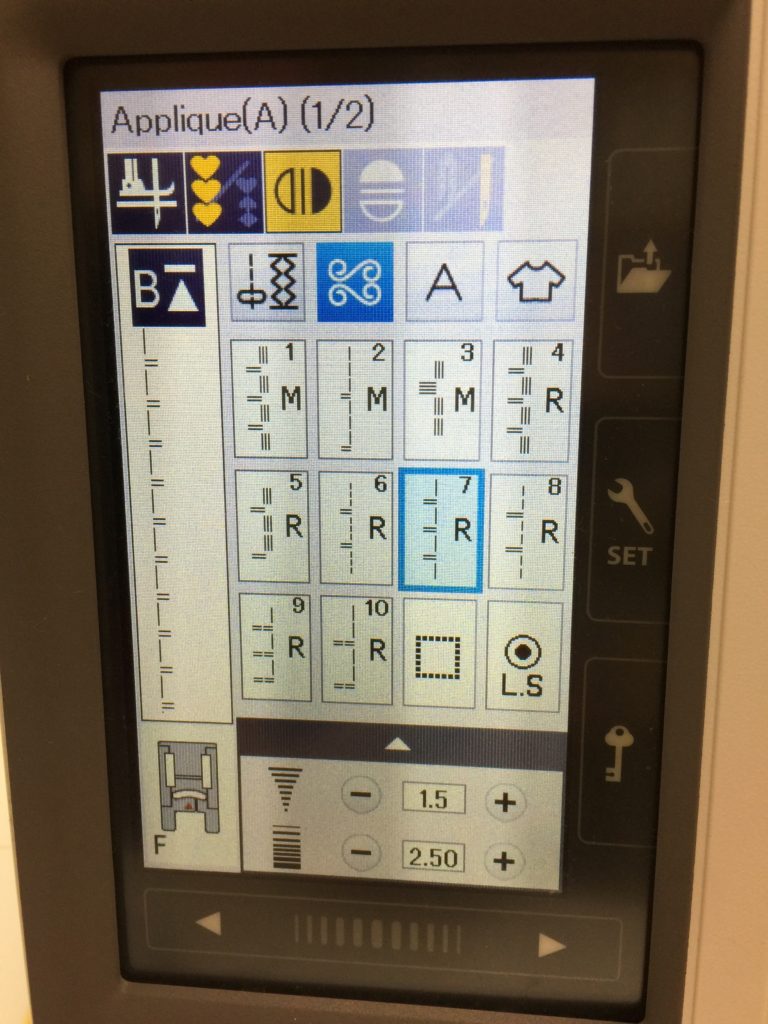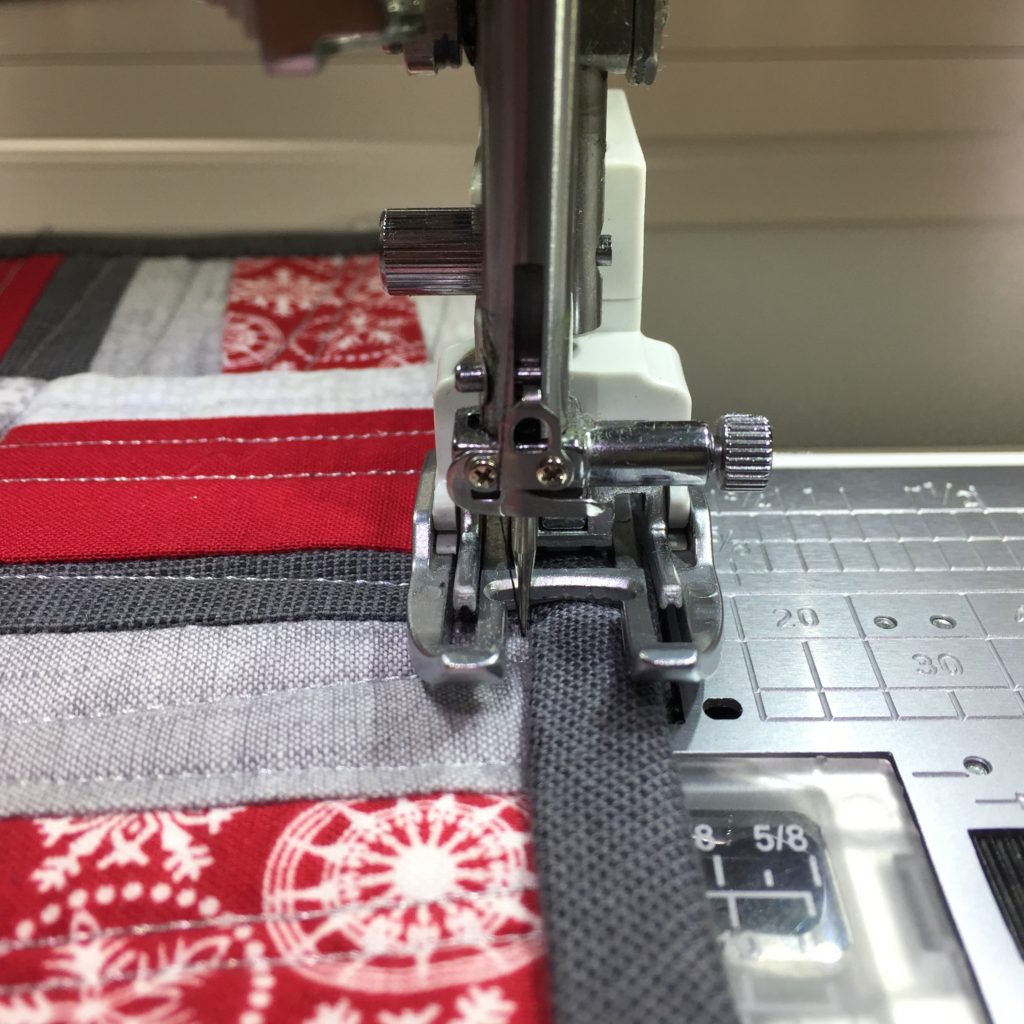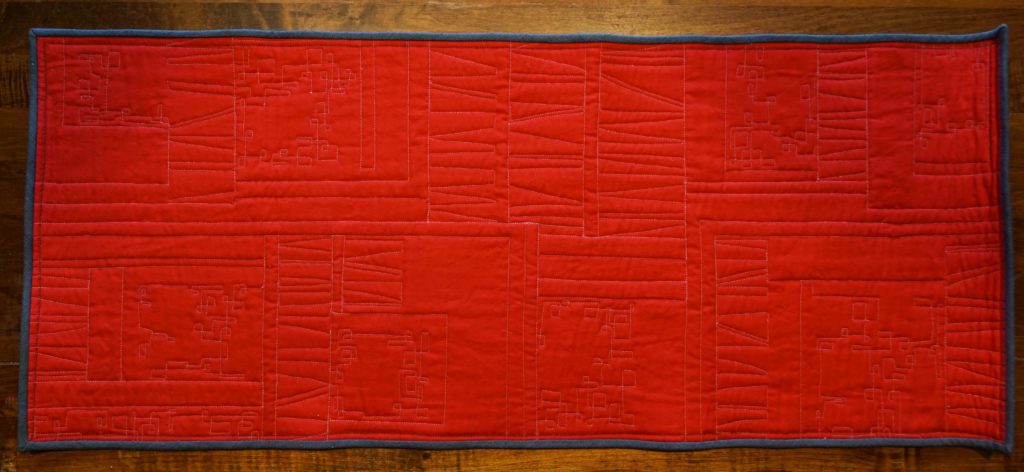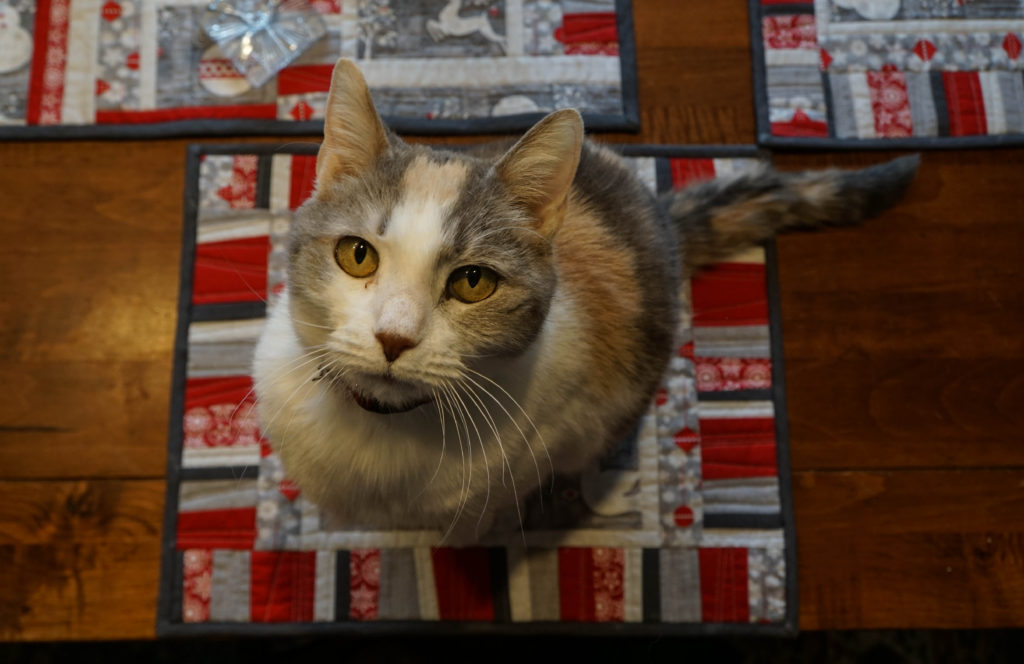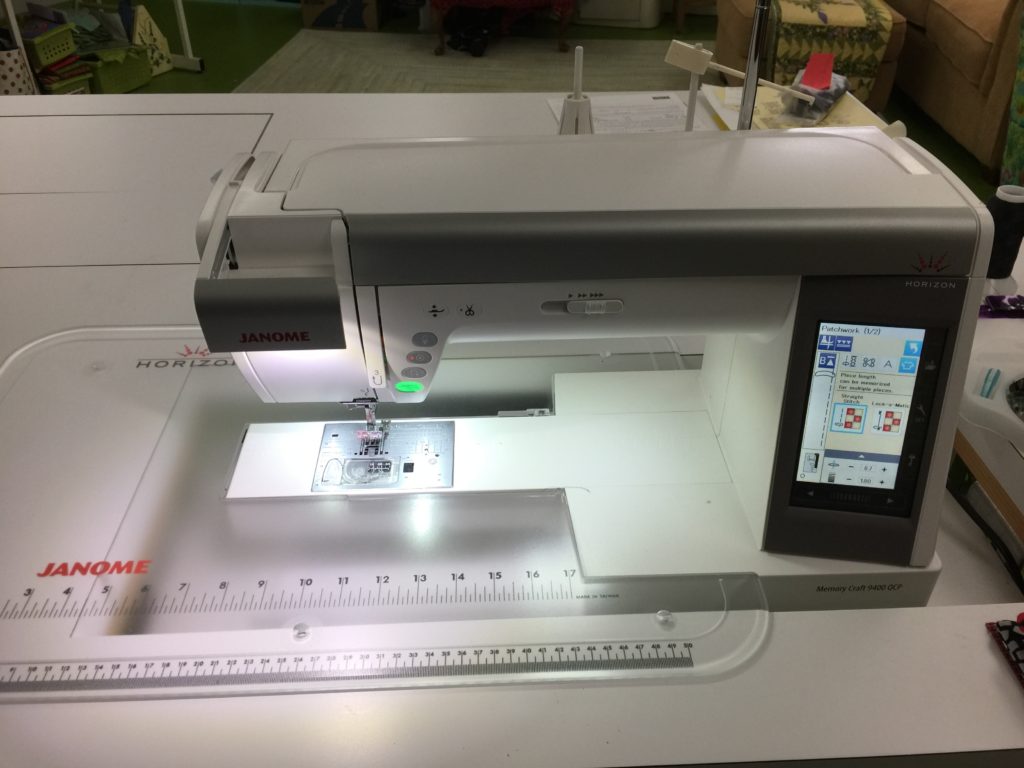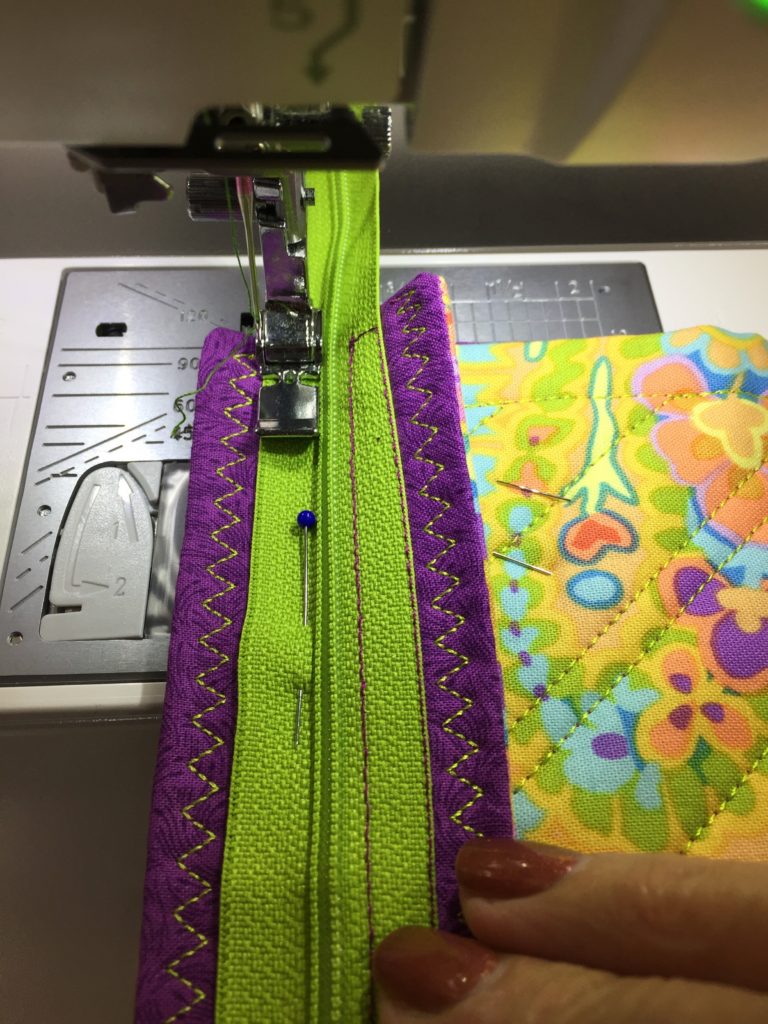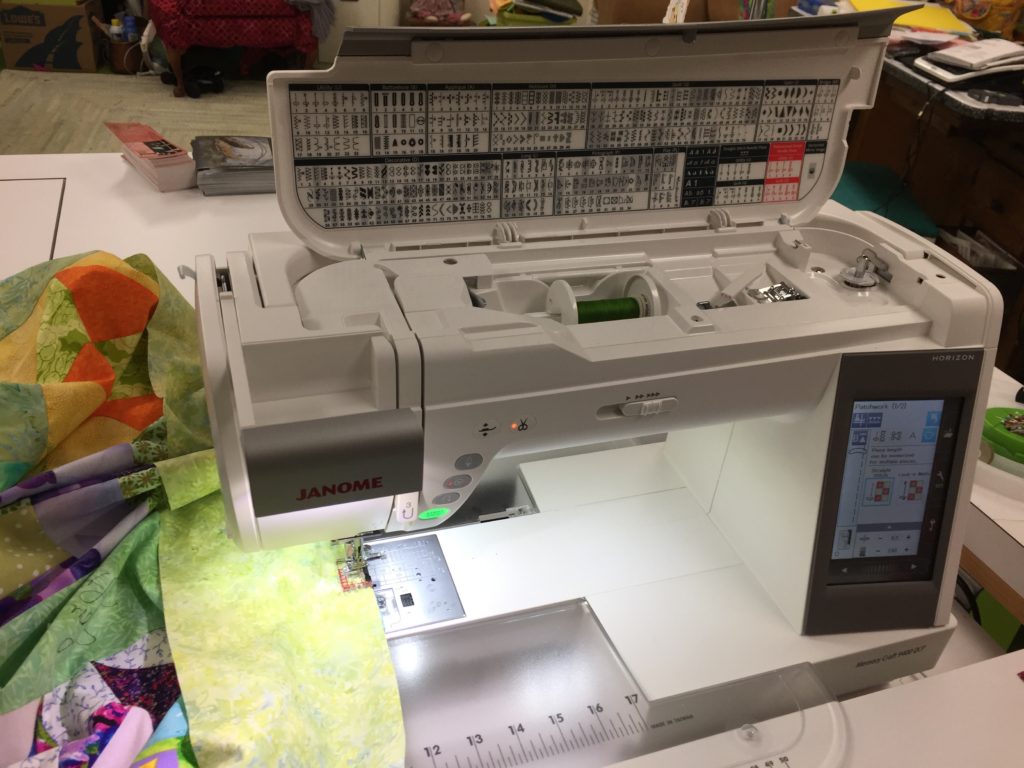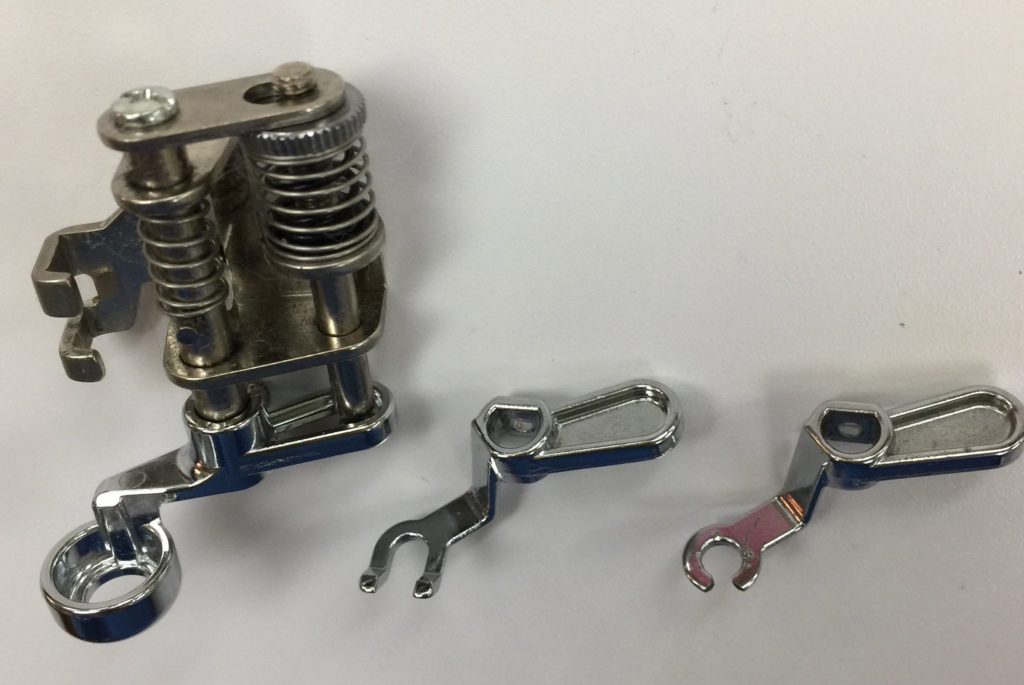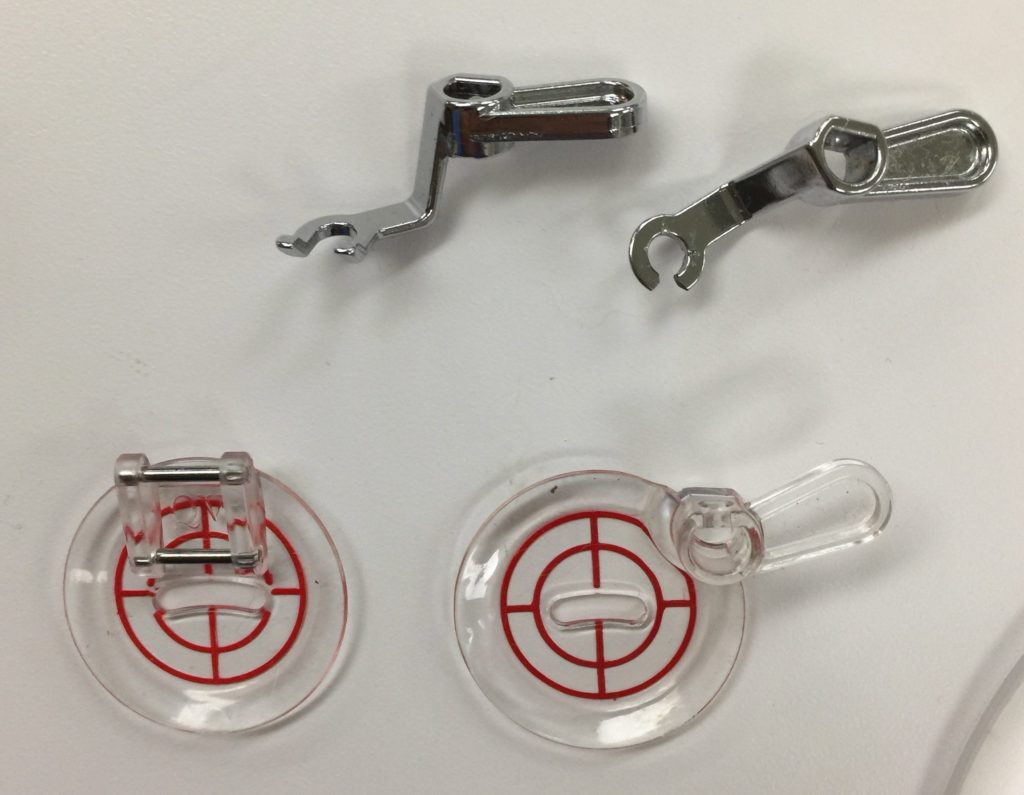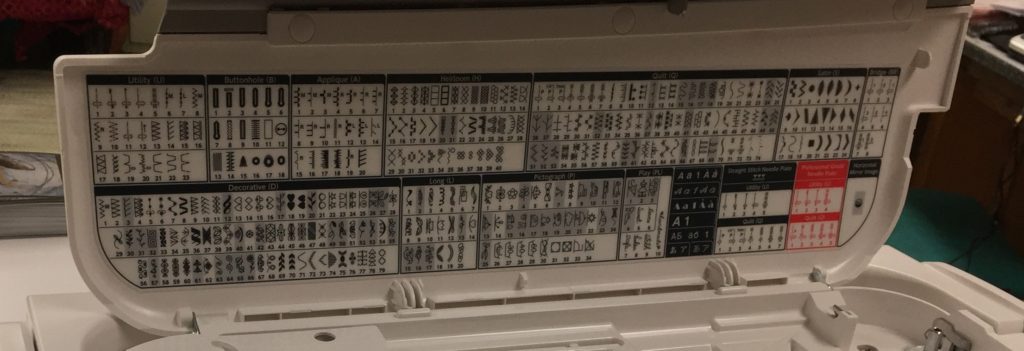Janome Education Summit 2018
Wednesday, May 30th, 2018Many of you know I have been a Janome Girl for a long time. I was beyond fortunate to be able to attend Janome-America’s first ever Education Summit last week in New Jersey. It brought together Janome Educators–those wonderful folks who work in show booths for Janome, Janome dealers, in classrooms at quilt shows, around North America, the National Spokespersons for Janome for both the US, Kimberly Einmo, and Canada, Tamara Kate, as well as many Janome Artisans (like me) and Janome Makers. As someone said at the start, I am in awe of the talent in that room, and my awe only increased as the week progressed. I’ll share what we did over several blogposts because it was WAY to much fun and educational to fit into one post. A bunch of us from the summit are blogging, so I will link to their posts at the end (and perhaps in a separate post, too). A HUGE HUGE HUGE THANK YOU to Janome America–I think all of us are still floating on the collective energy and inspiration!
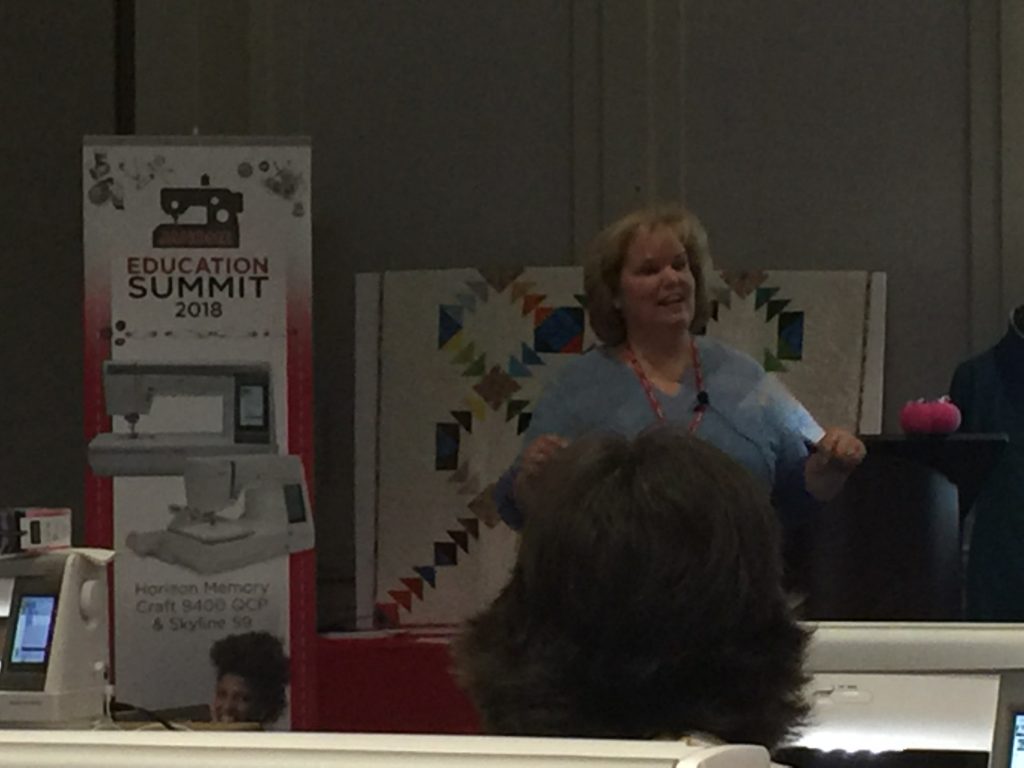
Our welcome and first session were from Janome’s new US Spokesperson, Kimberly Einmo. She’s well known for her many books on Jelly Roll quilts, great traditional piecing techniques, and being an all around nice person.
We began by working on the Janome 9400, the machine I have in my studio. You will have to pry it out of my cold dead hands. I love what I can do on this machine. Stay tuned for different session work on it (as well as all my garment sewing and a lot of my quilting).
The swag that came from attending this Summit was unbelievable–thanks to ALL the donors. Kimberly designed a ruler for flying geese and has a new line of fabric, Solid-ish which was one of our first delights. I had admired it on Facebook posts, but OMG it is SO much prettier in person! And I am now a convert to specialized rulers. This ruler makes it brainless and possible for even me to get perfect points (and I totally mean that, not just complimenting because we got a freebie, it really works).
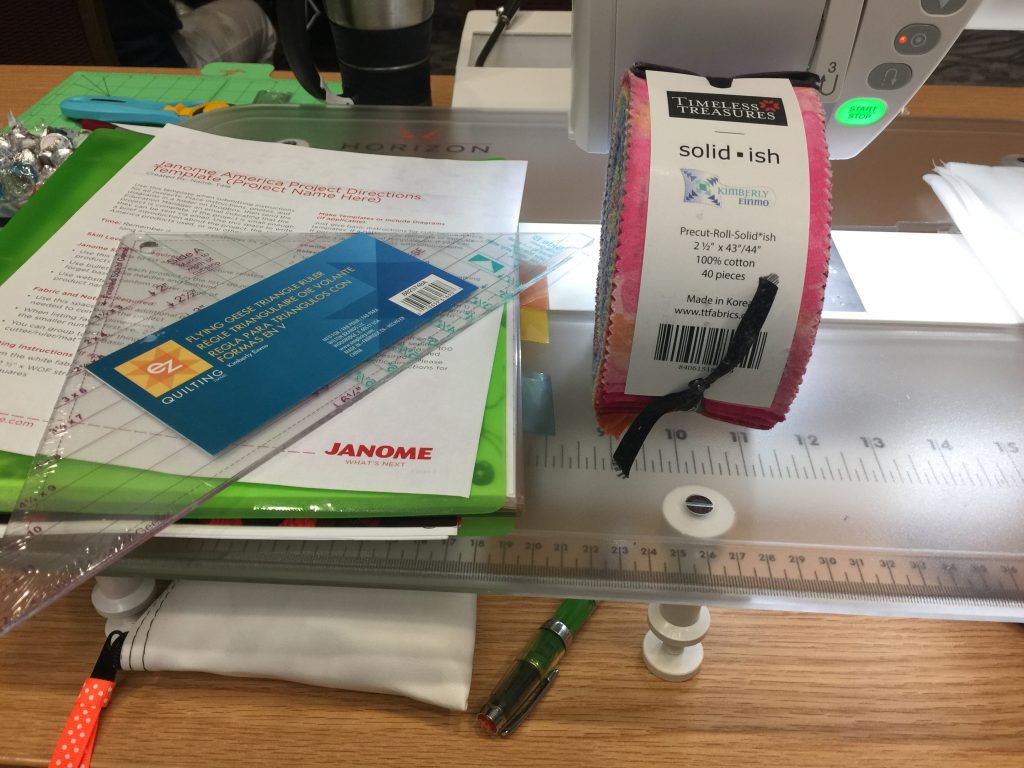
Check with your local shop or online for solid-ish. There’s a warm pink and coral and yellow that I want some yardage! Well, the aquas too, and the greens…..
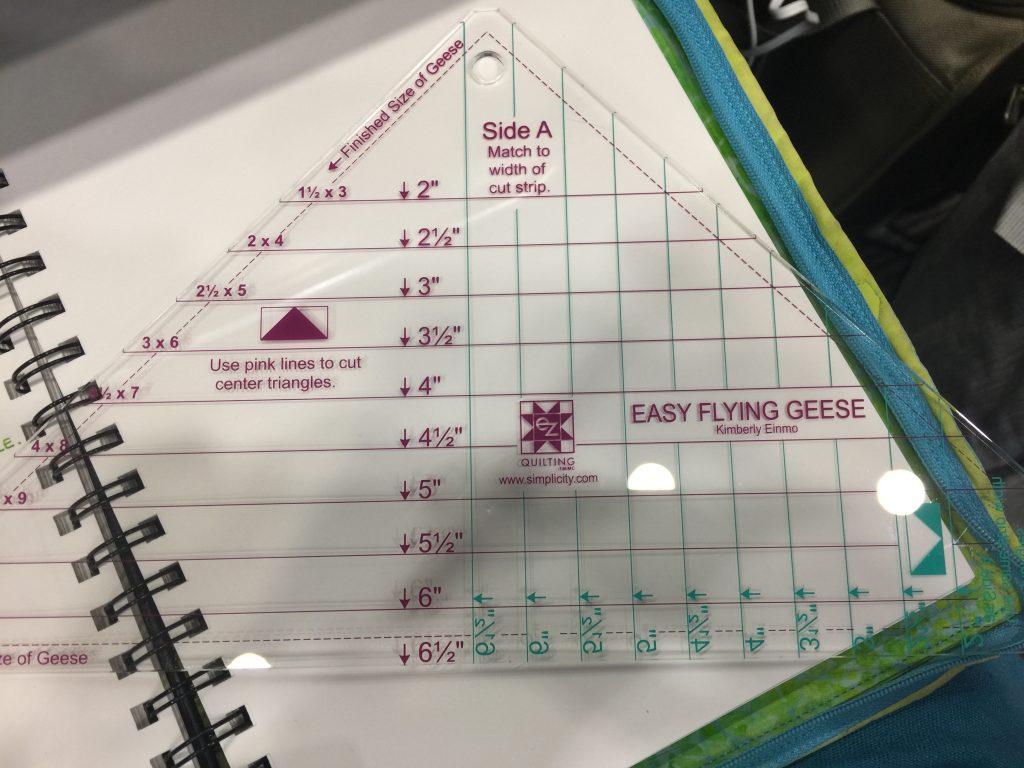
Even I can use a ruler like Kimberly’s Easy Flying Geese: the colors are pink and mint for breast and ovarian cancer awareness. If you can read the writing, in this case the pink, that makes the geese (notice the darkened triangle above the 3 1/2″ line?). If you can read the blue (flip the ruler over), it is for the background pieces. Easy peasy.
One of the first and most useful tips came at the start: ya know how Jelly rolls and other precuts have pinked edges and shed bits of thread and lint like crazy? Lint roller them FIRST, before you undo the package!!!!! Brilliant!
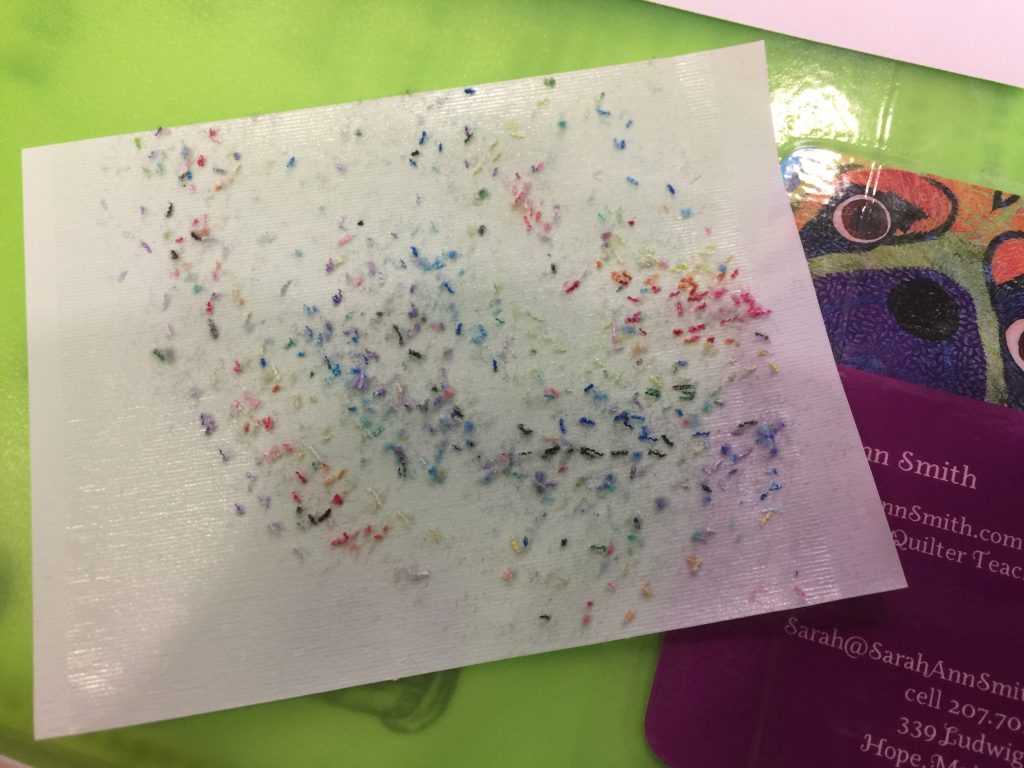
If you lint roller your jelly roll, you end up with lots less floaty bits messing up your clothes and studio!
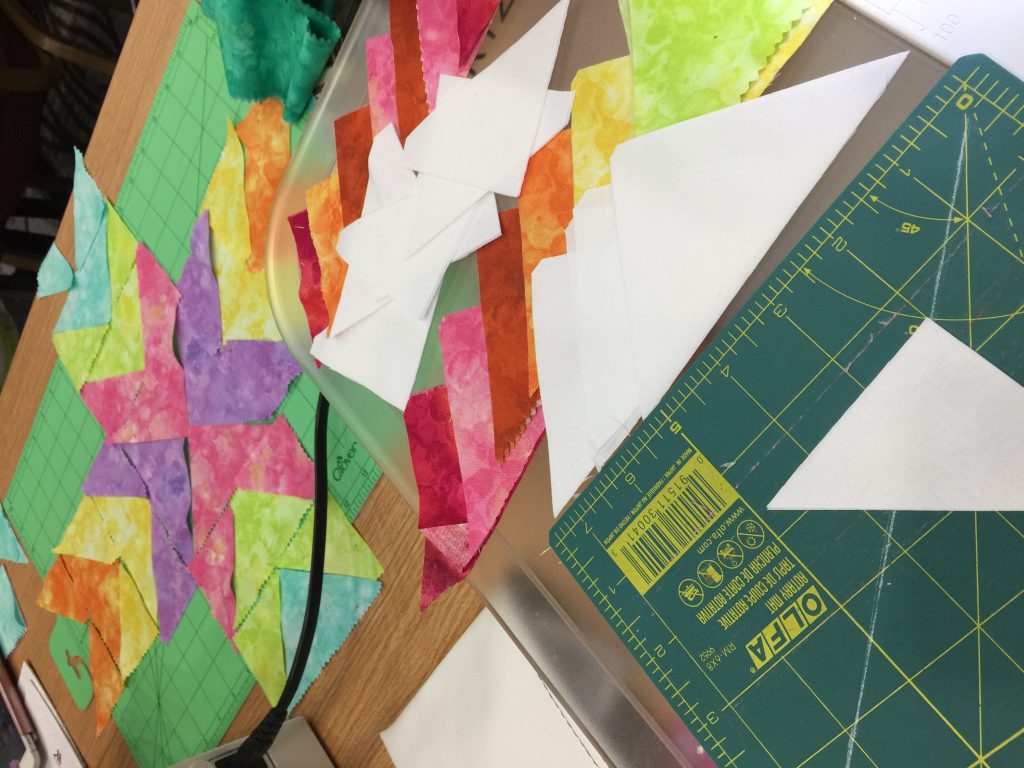
This shows my pieces laid out on my sewing machine table and a block in progress by Kimberly Coffin, my tablemate, whom you can find at her website Sweet Red Poppy.
I tend to stress in classroom situations and my brain freezes, so I don’t accomplish a lot. But I do start thinking. I totally want some play time to make more geese and maybe some placemats, a wall quilt of the modern persuasion…. I saw what Tamara Kate was doing and totally thought that I need to get out of my box and play. Go check Tamara Kate’s website Kayajoy for inspiration.
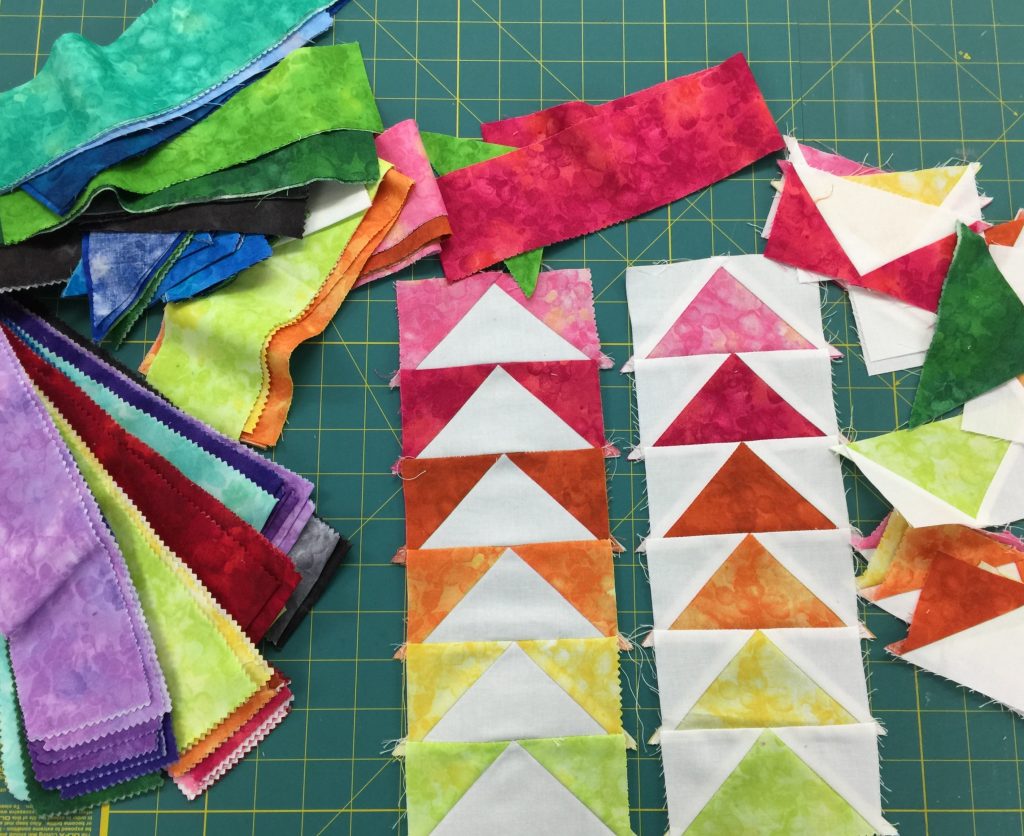
My flying geese…. I need some new placemats for spring and summer, so think I’ll order some of my favorites…that magenta, and the bottle green, and the turquoise…oh dear…..
More soon! Next post will be about ruler work with Amy Dreishbach Johnson of Sew Simple of Lynchburg VA.

